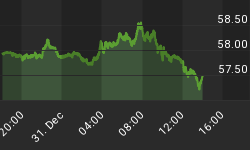Despite the incessant, nauseating calls for a bottom in real estate and banks, financial firms now find themselves in their most vulnerable conditions since the credit crisis began last summer. Just this week alone we were given three data points that help underscore just how precarious a situation these companies are in.
Wachovia Bank corp. reported that its non-performing assets soared to $11.9 billion in Q2 2008 from just $1.9 billion a year earlier. Obviously, Wachovia is not alone in experiencing the deterioration in this key metric. As more loans become insolvent, more homes will become part of the existing home inventory. This will place further pressure on the mortgage backed securities market as well as real estate prices, and so on.
To add to the pressure banks are experiencing from their real estate assets, credit card payments that are 30 days or more overdue soared to a 4 ½ year high. Why? After banks tightened lending standards on home equity loans and equity lines of credit, consumers began to lean on their credit cards to bridge the gap between income and debt service. Not only do these loans carry a much greater rate of interest, they are also unsecured lines of credit to the banks. Now that the bill has come due, consumers find themselves increasingly without the means to remain solvent by relying on this type of loan.
Meanwhile, commercial bank borrowing at the discount window reached a record high in six of the last eight weeks. The Fed also injected $70 billion in one day (the most since the September 11th terrorist attacks) and the effective Fed Funds rate hit a record high of 4 percentage points above its target rate of 2%. These are all indications that banks are hoarding cash at record levels. When banks undergo this level of duress, they do not create loans for consumers to buy more houses and cars. They instead must hold on to cash as they seek to repair their balance sheets. This puts further pressure on asset prices and hence further pressure on bank assets.
I could go on and discuss the blowing out of credit spreads e.g. TED and LIBOR OIS spread, but it should be clear that both the financial sector and housing market are still very far from making a bottom. The real estate market--much like water seeks its own level--will eventually reach a point that reconciles the imbalance between household income and price. Once that level has been achieved, the financial industry can stabilize and the economy should regain its footing. In the meantime, we can only hope that those in the administration and at the Federal Reserve realize that in the end there is no such thing as a bailout. Merely placing distressed assets on the taxpayer's balance sheet is no panacea. In the long term markets will always prevail and the sooner we let them work the quicker we will find a resolution to this crisis.
*Please check out my podcast, The Mid-Week Reality Check.
















